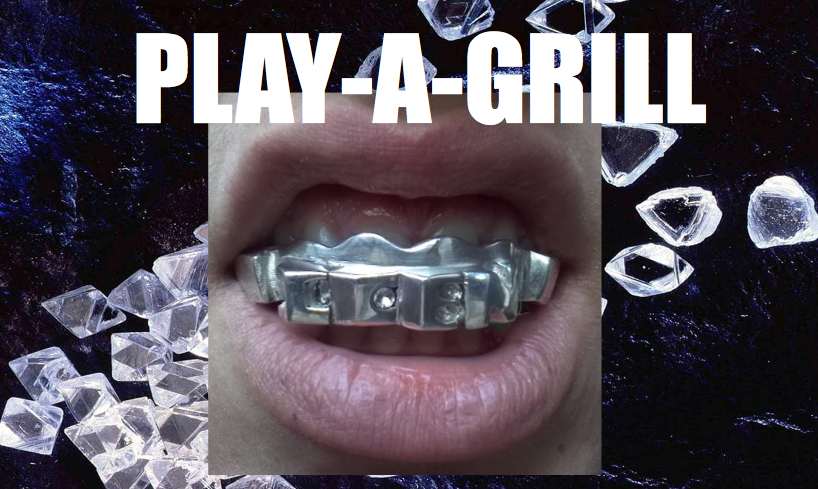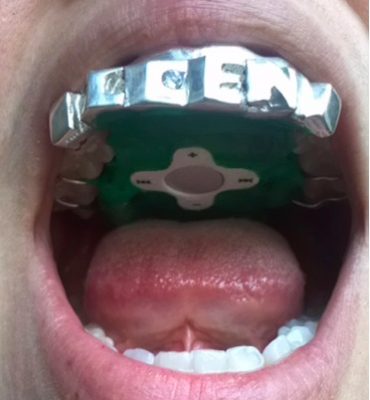Lemme see yo grillzzzz
This seriously hip new retainer lets you listen to music through your teeth
Allison T. McCann • June 8, 2012

Parson design student Aisen Chacin's "Play-A-Grill." [Image Credit: Aisen Chacin]
Okay so the obvious first question I had was, “Does this hurt your teeth and/or brain?” But Parsons The New School for Design student Aisen Chacin assured me that, “No, the player does not hurt; all perceivable waves are in the form of sound. They are not felt as tactile information.”
PHEW. Because I totally want one of these.
Play-A-Grill, the orthodontia-style mp3 player designed by Chacin, is a wireless device that utilizes bone conduction to send sound waves through the jawbone and to your ears. And it’s controlled entirely by your tongue via an old school mp3 player interface embedded in a retainer-style mouthpiece. (No, it does not simultaneously straighten your teeth.)

An inner look at the Pay-A-Grill.
Chacin said the idea for Play-A-Grill came from learning about bone conduction — namely that sound waves could travel through solids as well as air. An installation called “Sound Bite” at the Exploratorium Museum in San Francisco allowed her to experience this jawbone-to-ear bone vibration firsthand, and she discovered that hip-hop music was the most clearly discernable.
Hence, the grill.
“With the idea of teeth bone conduction hearing brewing in my mind, it clicked!” Chacin told me in an email. “Grills are worn over the teeth — the perfect opportunity to make an arbitrary music object the player itself through bone conduction.”
So how exactly does it work? Well, there’s a small vibration motor hooked up to the output jack of the retainer/mp3 player that vibrates to the frequency of the song (perhaps Nelly’s “Grillz” would be an appropriate selection). Once you bite down on the motor, your teeth begin to chatter at the same frequency too. And because your teeth are embedded in the jawbone (in close proximity to the inner ear bones) this in turn vibrates the cochlear nerve that sends the information to your brain as sound.
The process is similar to that of a cochlear implant, except that the vibrations originate from your teeth, so the sound quality isn’t as clear or loud.
Unfortunately the grill is still in prototype phase and isn’t on the market just yet — though Chacin says “there are some conversations about making this a retail item” — in which case I will be first in line to purchase my iTongue.